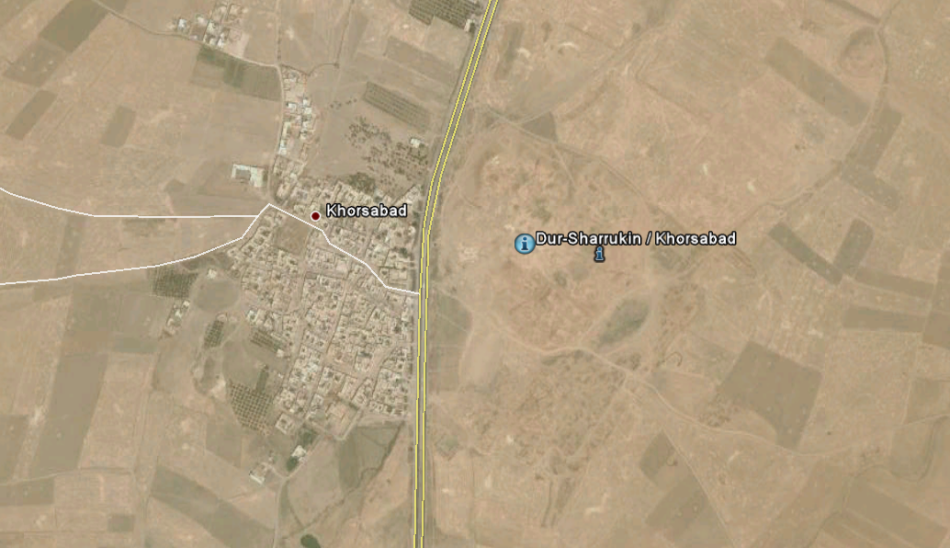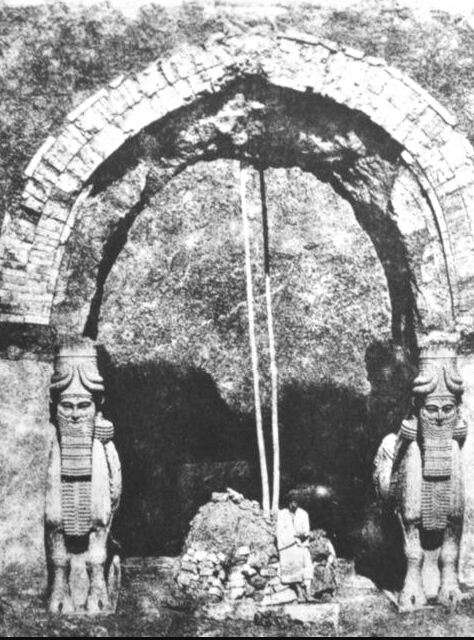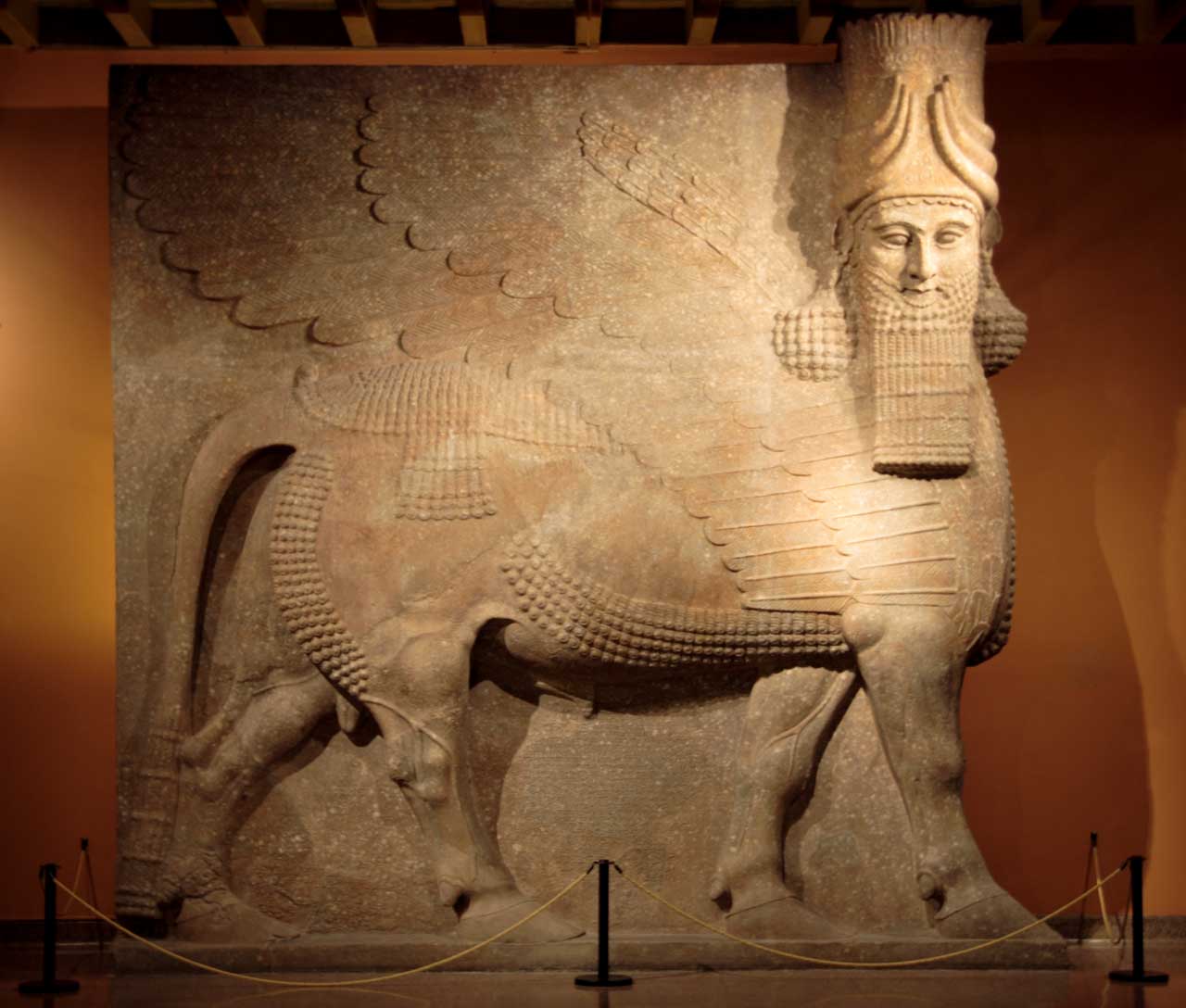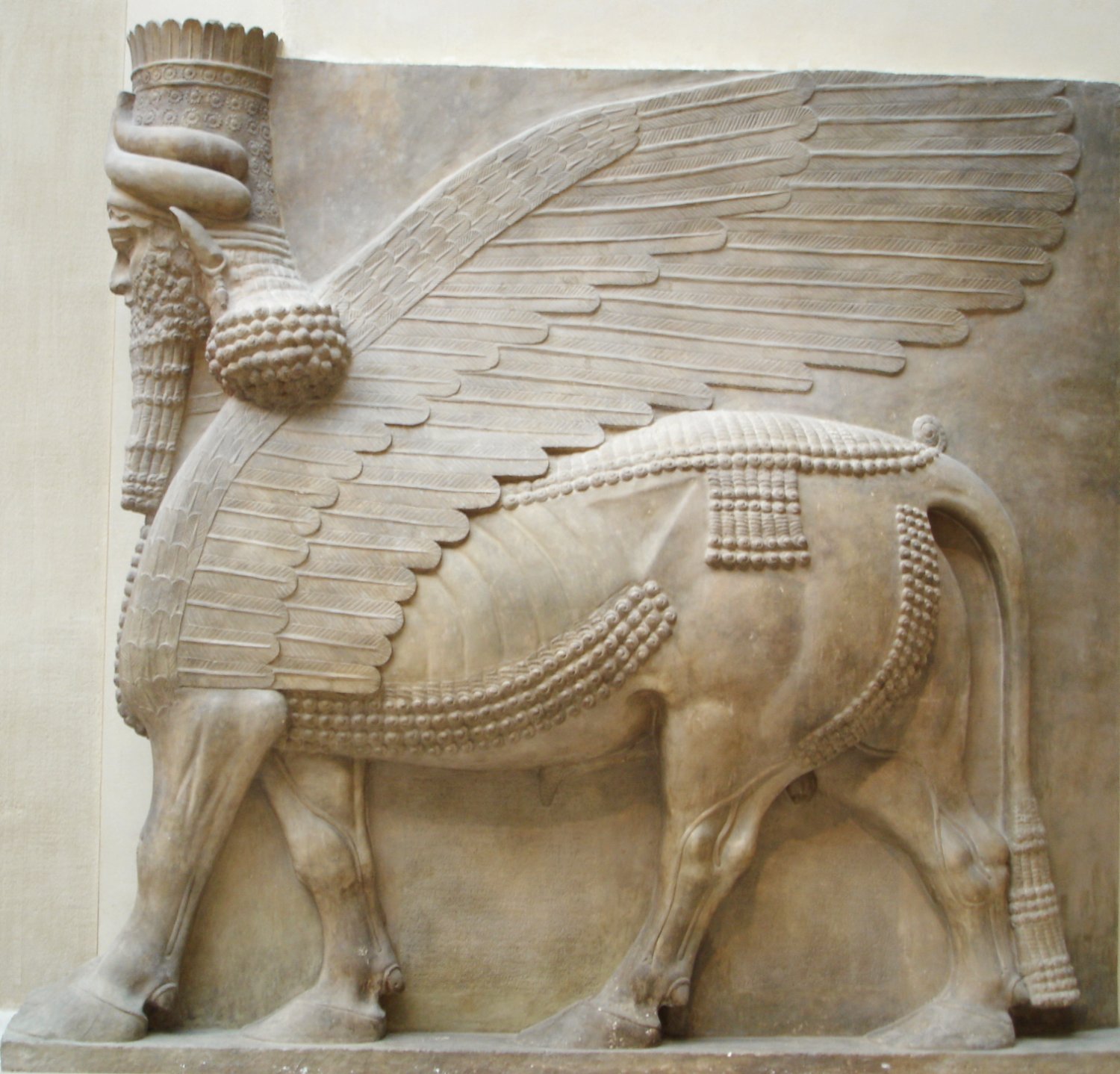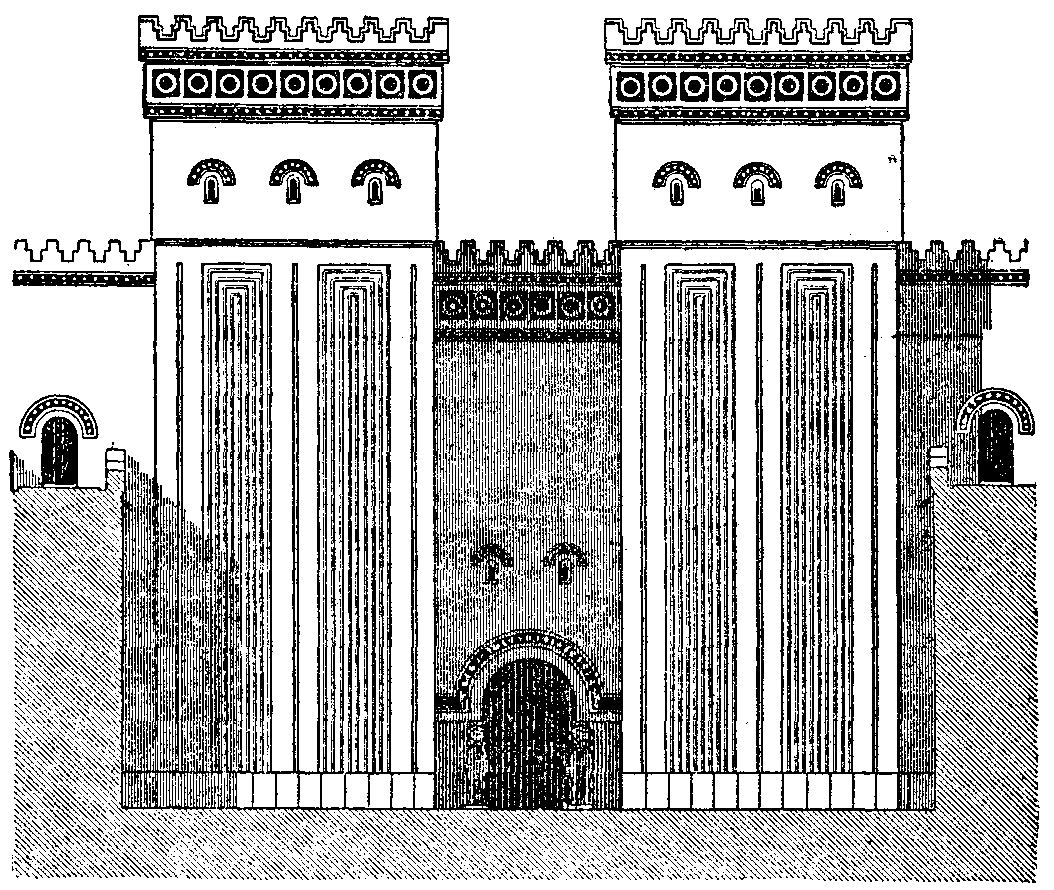|
Assyrian Empire |
|||||
|
36° 30′ 34″ N, 43° 13′ 46″ E ..
Dur-Sharrukin Dur-Sharrukin
("Fortress of Sargon"; Arabic: دور شروكين), present
day Khorsabad, was the Assyrian capital in the time
of Sargon II of Assyria. Khorsabad is a village in
northern Iraq, 15 km northeast of Mosul, which is
still today inhabited by Assyrians. The great city
was entirely built in the decade preceding 706 BCE.
After the unexpected death of Sargon in battle, the
capital was shifted 20 km south to Nineveh.
The photo shows a huge gate, flanked by two human-headed bulls. |
|||||
| History Sargon II ruled
from 722 to 705 BCE. In 717, Sargon ordered the
construction of a new palace-city at the confluence
of the Tigris and the Greater Zab rivers. The
demands for timber and other materials and
craftsmen, who came from as far as coastal
Phoenicia, are documented in contemporary Assyrian
letters. The debts of construction workers were
nullified in order to attract a sufficient labour
force. The land in the environs of the town was
taken under cultivation, and olive groves were
planted to increase Assyria's deficient
oil-production. The great city was entirely built in
the decade preceding 706 BCE, when the court moved
to Dur-Sharrukin, although it was not completely
finished yet. Sargon was killed during a battle in
705. After his unexpected death his son and
successor Sennacherib abandoned the project, and
relocated the capital with its administration to the
city of Nineveh, 20 km south. The city was never
completed and it was finally abandoned a century
later when the Assyrian empire fell.
Features The town was
of rectangular layout and measured 1758.6 by
1635 metres. The enclosed area comprised 3
square kilometres, or 288 hectares. The length
of the walls was 16280 Assyrian units, which
corresponded to the numerical value of Sargon's
name. The city walls were massive and 157 towers
protected its sides. Seven gates entered the
city from all directions. A walled terrace
contained temples and the royal palace. The main
temples were dedicated to the gods Nabu, Shamash
and Sin, while Adad, Ningal and Ninurta had
smaller shrines. A temple tower, ziqqurat, was
also constructed. The palace was adorned with
sculptures and wall reliefs, and the gates were
flanked with winged-bull shedu statues weighing
up to 40 tons. Sargon supposedly lost at least
one of these winged bulls in the river.
This is
the Assyrian Lamassu at the Oriental
Institute Museum at the University of
Chicago. Gypsum (?) Khorsabad, entrance
to the throne room Neo-Assyrian Period,
ca. 721-705 B.C. OIM A7369 This 40 ton
statue was one of a two flanking the
entrance to the throne room of King
Sargon II. A protective spirit known as
a lamassu, it is shown as a composite
being with he head of a human, the body
and ears of a bull, and the wings of a
bird. When viewed from the side, the
creature appears to be walking; when
viewed from the front, to be standing
still. Thus it is actually represented
with five, rather than four legs. Source/Photographer
Trjames (Own work)
In addition to the great city, there was a royal hunting park and a garden that included "all the aromatic plants of Hatti and the fruit-trees of every mountain", a "record of power and conquest", as Robin Lane Fox has observed. Surviving correspondence mentions the moving of thousands of young fruit trees, quinces, almonds, apples and medlars. "On the central canal of Sargon's garden stood a pillared pleasure-pavilion which looked up to a great topographic creation: a man-made Garden Mound. This Mound was planted with cedars and cypresses and was modeled after a foreign landscape, the Amanus mountains in north Syria, which had so amazed the Assyrian kings. In their flat palace-gardens they built a replica of what they had encountered." Archaeology Dur-Sharrukin is roughly a square with a border marked by a city wall 24 meters thick with a stone foundation pierced by seven massive gates. A mound in the northeast section marks the location of the palace of Sargon II. At the time of its construction, the village on the site was named Maganuba.
Lamassu
found during Botta's excavation, now in
the Louvre Museum.
The site was first noticed by the French Consul General at Mosul, Paul-Émile Botta in 1842. Botta believed, however, that Khorsabad was the site of biblical Nineveh. The site was excavated by Botta in 1842-44, joined in the later stages by artist Eugène Flandin. Victor Place resumed the excavations from 1852 to 1855. A significant number of the items recovered by the French at Dur-Sharrukin were lost in two river shipping incidents. In 1853, Place attempted to move two 30-ton statues and other material to Paris from Khorsabad on a large boat and four rafts. All of the vessels except two of the rafts were scuttled by pirates. In 1855, Place and Jules Oppert attempted to transport the remaining finds from Dur-Sharrukin, as well as material from other sites being worked by the French, mainly Nimrud. Almost all of the collection, over 200 crates, was lost in the river. Surviving artifacts from this excavation were taken to the Louvre in Paris.
Palace of
Dur-Sharrukin. Khorsabad, Iraq. Entrance
gateway.
1911 en:Encyclopædia Britannica Eleventh Edition, Vol. 2, Page 375 The site of Khorsabad
was excavated 1928–1935 by American
archaeologists from the Oriental Institute
in Chicago. Work in the first season was led
by Edward Chiera and concentrated on the
palace area. A colossal bull estimated to
weigh 40 tons was uncovered outside the
throne room. It was found split into three
large fragments. The torso alone weighed
about 20 tons. This was shipped to Chicago.
The preparation and shipment of the bull
back to the Oriental Institute was
incredibly arduous. The remaining seasons
were led by Gordon Loud and Hamilton Darby.
Their work examined one of the city gates,
continued work at the palace, and excavated
extensively at the palace's temple complex.
Since Dur-Sharrukin was a single-period site
that was evacuated in an orderly manner
after the death of Sargon II, few individual
objects were found. The primary discoveries
from Khorsabad shed light on Assyrian art
and architecture.
Plan of
Dur-Sharrukin, 1867
In 1957, archaeologists from the Iraqi Department Antiquities, led by Fuad Safar excavated at the site, uncovering the temple of Sibitti. |
|||||
|
Khorezmian Fortress
Koy-Krylgan-Kala
Fig.
1 The ancient Khorezmian fortress
Koy-Krylgan-kala appeared as an impact crater
on the air photo (left); its artificiality is obvious after the excavations in 1956 (right) [6]. |
|||||
References:
|
|||||
| FAIR USE NOTICE: This page contains copyrighted material the use of which has not been specifically authorized by the copyright owner. Pegasus Research Consortium distributes this material without profit to those who have expressed a prior interest in receiving the included information for research and educational purposes. We believe this constitutes a fair use of any such copyrighted material as provided for in 17 U.S.C § 107. If you wish to use copyrighted material from this site for purposes of your own that go beyond fair use, you must obtain permission from the copyright owner. | |||||
|
|
